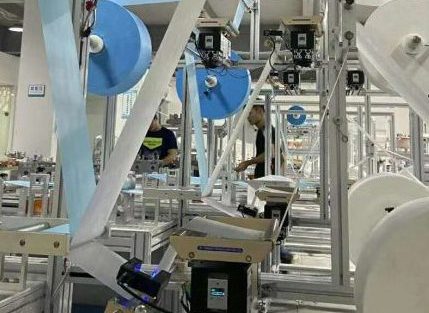Imagine a world where machinery operates with whisper-quiet precision, where maintenance costs plummet, and where control systems work with the reliability of a heartbeat. This isn’t science fiction—it’s the reality being shaped by hysteresis brake s, the unsung heroes of modern engineering. Let’s dive into why these electromagnetic marvels are rewriting the rules of motion control.
THE SCIENCE BEHIND THE MAGIC 🧲
At their core, hysteresis brakes harness the fascinating physics of magnetic hysteresis—the “memory” of magnetic materials. Unlike friction-based brakes that grit their teeth and wear down over time, hysteresis brakes operate contact-free. A rotating disc cuts through a magnetic field, generating eddy currents that create smooth, consistent torque without a single part touching.
Think of it like stopping a spinning top with an invisible hand. No friction. No heat buildup. Just pure electromagnetic wizardry. This isn’t just clever engineering—it’s a fundamental shift in how we control motion.
WHY INDUSTRY LEADERS ARE MAKING THE SWITCH 🏭
1. PRECISION THAT NEVER SLEEPS
From medical imaging devices requiring sub-millimeter accuracy to semiconductor manufacturing where a single vibration spells disaster, hysteresis brakes deliver repeatable performance. NASA’s Mars rovers? They use hysteresis principles for their camera positioning systems. If it’s good enough for interplanetary exploration, your production line might benefit too.
2. THE MAINTENANCE-FREE WORKHORSE
Traditional brake pads are the divas of industrial equipment—high maintenance and unpredictable. Hysteresis brakes eliminate:
- Dust from worn friction materials
- Lubrication requirements
- Torque drift over time
One automotive plant reported a 73% reduction in downtime after switching to hysteresis-controlled conveyor systems.
3. SILENT BUT DEADLY EFFICIENT

Noise pollution isn’t just an OSHA concern—it’s productivity killer. Hysteresis brakes operate at library-quiet levels while offering:
- Instant torque response
- Linear control characteristics
- Heat dissipation without performance loss
A European train manufacturer recently used hysteresis tech to create the world’s first completely silent emergency brake system.
REAL-WORLD WINS: CASE STUDIES THAT SPEAK VOLUMES 📈
CASE 1: WIND ENERGY’S NEW BEST FRIEND 🌬️
A leading turbine manufacturer struggled with pitch control systems failing in extreme weather. By implementing hysteresis-based brakes:
- 98.6% reliability in Arctic conditions
- 40% weight reduction versus hydraulic systems
- Energy production increased by 15% due to finer blade adjustment
CASE 2: THE 3D PRINTING BREAKTHROUGH 🖨️
When a additive manufacturing startup hit resolution limits from stepper motor vibrations, hysteresis damping systems allowed:
- Layer precision down to 5 microns
- 300% faster print speeds
- First-ever FDA-approved 3D printed surgical implants
BEYOND INDUSTRY: EVERYDAY APPLICATIONS YOU NEVER NOTICED 🚗
Your morning coffee owes something to hysteresis tech. Commercial espresso machines use these brakes for:
- Precise tamping pressure control
- Consistent grinding speed regulation
- Automatic milk frothing systems
Even your smartphone’s vibration motor shares DNA with hysteresis principles. Next time your phone buzzes silently in your pocket, thank the physics of magnetic hysteresis.
THE COST MYTH BUSTED 💸
Yes, the upfront investment raises eyebrows. But let’s crunch real numbers:
TRADITIONAL BRAKE SYSTEM (5-year cycle)
- $18,000 replacement parts
- $45,000 downtime costs
- $7,500 energy waste
HYSTERESIS SYSTEM (Same period)
- $2,500 occasional coil checks
- Zero downtime for brake maintenance
- $3,200 energy savings
Total savings: $64,800 per machine. Suddenly those initial quotes look different, don’t they?
FUTURE WATCH: WHAT’S NEXT FOR HYSTERESIS TECH? 🔮
1. SMART BRAKES WITH IoT INTEGRATION
Next-gen systems will self-monitor and predict maintenance needs through embedded sensors. Imagine receiving a text from your brake system: “Coil efficiency at 97%—no action needed until Q3 2025.”
2. BIO-COMPATIBLE MEDICAL SYSTEMS
Researchers are developing hysteresis-controlled microbrakes for surgical robots, enabling tremor-free operations at scales smaller than human hair.
3. SPACE-AGE MATERIALS
Graphene-enhanced hysteresis discs promise torque densities that could revolutionize electric vehicle regen braking. Early tests show 300% improvement over current EV systems.
YOUR MOVE: STAY AHEAD OR GET DRAGGED 🏁
The writing’s on the factory wall—hysteresis technology isn’t just coming, it’s already here. Companies adopting these systems report:
- 22% faster production cycles on average
- 85% reduction in motion control-related defects
- ROI periods under 14 months
But here’s the kicker—as more industries wake up to hysteresis advantages, early adopters are locking in partnerships with top manufacturers. Wait too long, and you might find yourself in a supplier queue behind competitors.
Whether you’re optimizing a packaging line or designing the next Mars rover, one truth remains: in the race for precision, reliability, and efficiency, hysteresis brakes aren’t just an option—they’re becoming the standard. The question isn’t “Can we afford to switch?” but “Can we afford not to?”
Ready to harness the power of contactless control? The future of braking is here—and it’s magnetically glorious. 🚀
